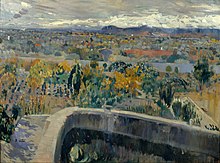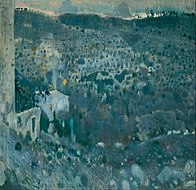
Joaquín Torres García was a Uruguayan-Spanish artist, sculptor, muralist, novelist, writer, teacher, and theorist born in Montevideo, Uruguay. As an adolescent he emigrated to Catalunya, Spain, where he began his career as an artist. He lived and worked primarily in Spain, and was also active in the United States, Italy, France, and Uruguay. Torres-García is known for creating the prominent art movements Modern Classicism and Universal Constructivism.
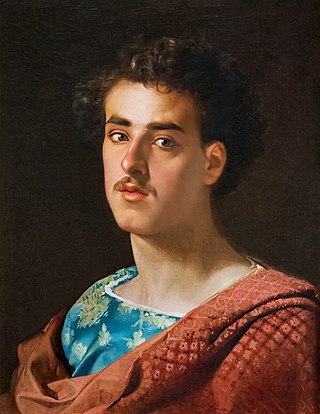
Marià Josep Maria Bernat Fortuny i Marsal, known more simply as Marià Fortuny or Mariano Fortuny, was the leading Spanish painter of his day, with an international reputation. His brief career encompassed works on a variety of subjects common in the art of the period, including the Romantic fascination with Orientalist themes, historicist genre painting, military painting of Spanish colonial expansion, as well as a prescient loosening of brush-stroke and color.
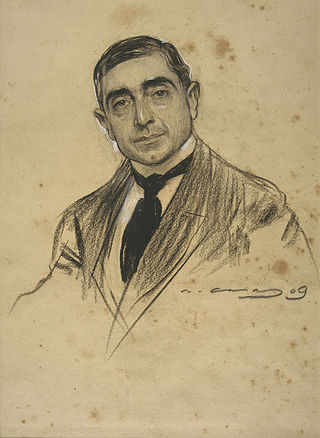
Dionís Baixeras i Verdaguer (1862–1943) was a naturalist Spanish artist from Barcelona, who specialized in oil on canvas and was noted for his realistic and detailed Orientalist and everyday life scenes.

The Museu Nacional d'Art de Catalunya, abbreviated as MNAC, is a museum of Catalan visual art located in Barcelona, Catalonia, Spain. Situated on Montjuïc hill at the end of Avinguda de la Reina Maria Cristina, near Pl Espanya, the museum is especially notable for its outstanding collection of romanesque church paintings, and for Catalan art and design from the late 19th and early 20th centuries, including modernisme and noucentisme. The museum is housed in the Palau Nacional, a huge, Italian-style building dating to 1929. The Palau Nacional, which has housed the Museu d'Art de Catalunya since 1934, was declared a national museum in 1990 under the Museums Law passed by the Catalan Government. That same year, a thorough renovation process was launched to refurbish the site, based on plans drawn up by the architects Gae Aulenti and Enric Steegmann, who were later joined in the undertaking by Josep Benedito. The Oval Hall was reopened in 1992 on the occasion of the Olympic Games, and the various collections were installed and opened over the period from 1995 to 2004. The Museu Nacional d'Art de Catalunya was officially inaugurated on 16 December 2004. It is one of the largest museums in Spain.
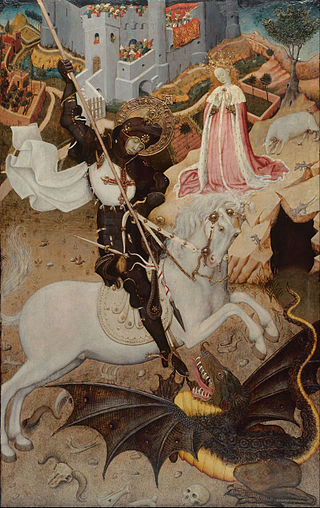
Bernat Martorell was the leading painter of Barcelona, in modern-day Spain. He is considered to be the most important artist of the International Gothic style in Catalonia. Martorell painted retable panels and manuscript illuminations, and carved sculptures and also provided designs for embroideries.
Joaquim Sunyer was a Catalan painter often linked to the Noucentisme movement.

Jaume Huguet was a Catalan painter.

Albert Ràfols-Casamada was a Spanish painter, poet and art teacher involved in the vanguard movements of his time. He is considered one of the most important, multifaceted Catalan artists of his time. His artwork began in the post-expressionist, figurative sphere but soon developed into his own abstract style grounded in a poetic rendering of everyday reality.

Eduard Arranz Bravo was a Catalan Spanish painter.
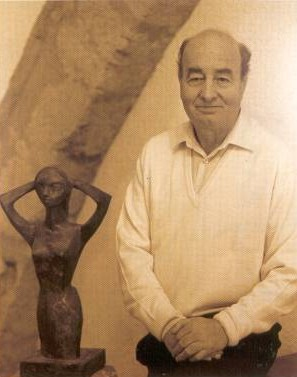
Maties Palau Ferré (1921–2000) was a painter from Montblanc, Catalonia, Spain. He made cubist oil paintings, India ink drawings, as well as ceramics and a few sculptures.
Joaquim Gomis Serdañons was a Catalan photographer, collector, entrepreneur, and promoter of the arts.
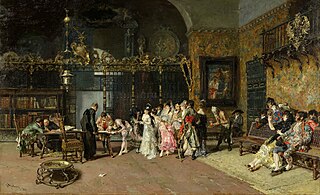
The Spanish Wedding or La Vicaría (1868–1870) is a masterwork by Marià Fortuny i Marsal, also known as Marià Fortuny or Mariano Fortuny. La Vicaría exemplifies genre painting of the 19th century. The use of jewel tones, contrasts between light and dark, and the virtuosity of the work attest to Fortuny's talent. It resides at Museu Nacional d'Art de Catalunya in Barcelona, Spain.
Salon Pedal is a color lithograph on paper designed in 1897 by the Catalan artist Alexandre de Riquer. The print's design evokes the decorative style seen in Modernisme art. The artwork is in the collection of Museu Nacional d'Art de Catalunya, in Barcelona.

Saint Agnes is an oil-on-canvas painting executed c. 1635–1640 by the Italian Baroque painter Massimo Stanzione. It is now in the National Art Museum of Catalonia.

Joaquin Mir Trinxet or Joaquin Mir y Trinxet was a Catalan artist known for his use of color in his paintings. He lived through a turbulent time in the history of his native Barcelona. His paintings helped to define the Catalan art movement known as modernisme.

Darío de Regoyos y Valdés was a Spanish painter. He was notable for contributing to "the renewal of modern Spanish painting". A student of Carlos de Haes at the Real Academia de Bellas Artes de San Fernando in 1878, he later studied at the Académie Royale des Beaux-Arts in Brussels. He traveled extensively in the 1880s, accompanied by his friend, the painter Adolfo Guiard. He was a member of the art group L'Essor and a founding member of Les XX with the Belgian avant-garde scene. During these experiences he gained a significant influence from Impressionist and Neo-Impressionist painters.
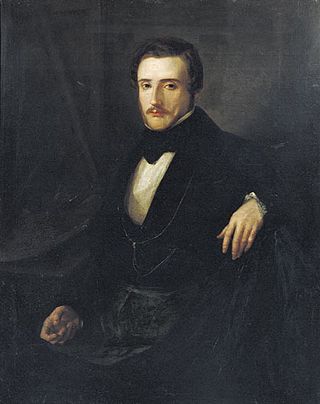
Lluís Rigalt i Farriols was a Spanish landscape painter and graphic artist.

Alex Clapés was a Catalan modernisme artist. He was one of the less known painters in the late 19th century and early 20th century in Catalonia, Spain. He was born in Vilassar de Dalt on September 10, 1850. He died in Barcelona in 1920. He is most known for performing some commissions for the Güell family, thanks to his friend and colleague, Antoni Gaudí.

The Conversion of St. Paul is a 1614 painting by Juan Bautista Maíno, located in the collection of the National Museum of Art of Catalonia (MNAC).
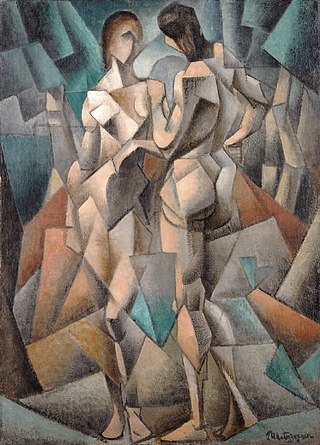
Galeries Dalmau was an art gallery in Barcelona, Spain, from 1906 to 1930. The gallery was founded and managed by the Symbolist painter and restorer Josep Dalmau i Rafel. The aim was to promote, import and export avant-garde artistic talent. Dalmau is credited for having launched avant-garde art in Spain.



